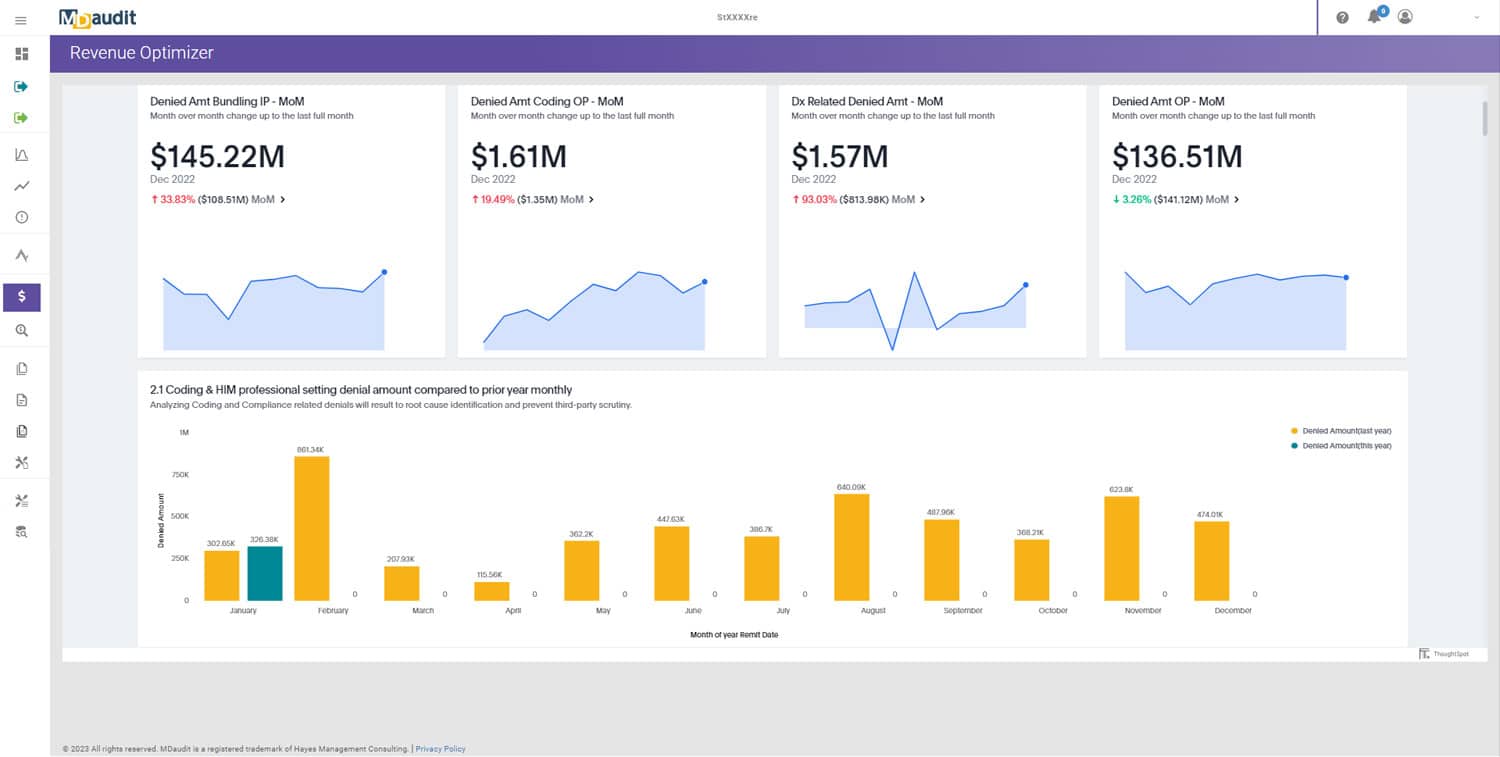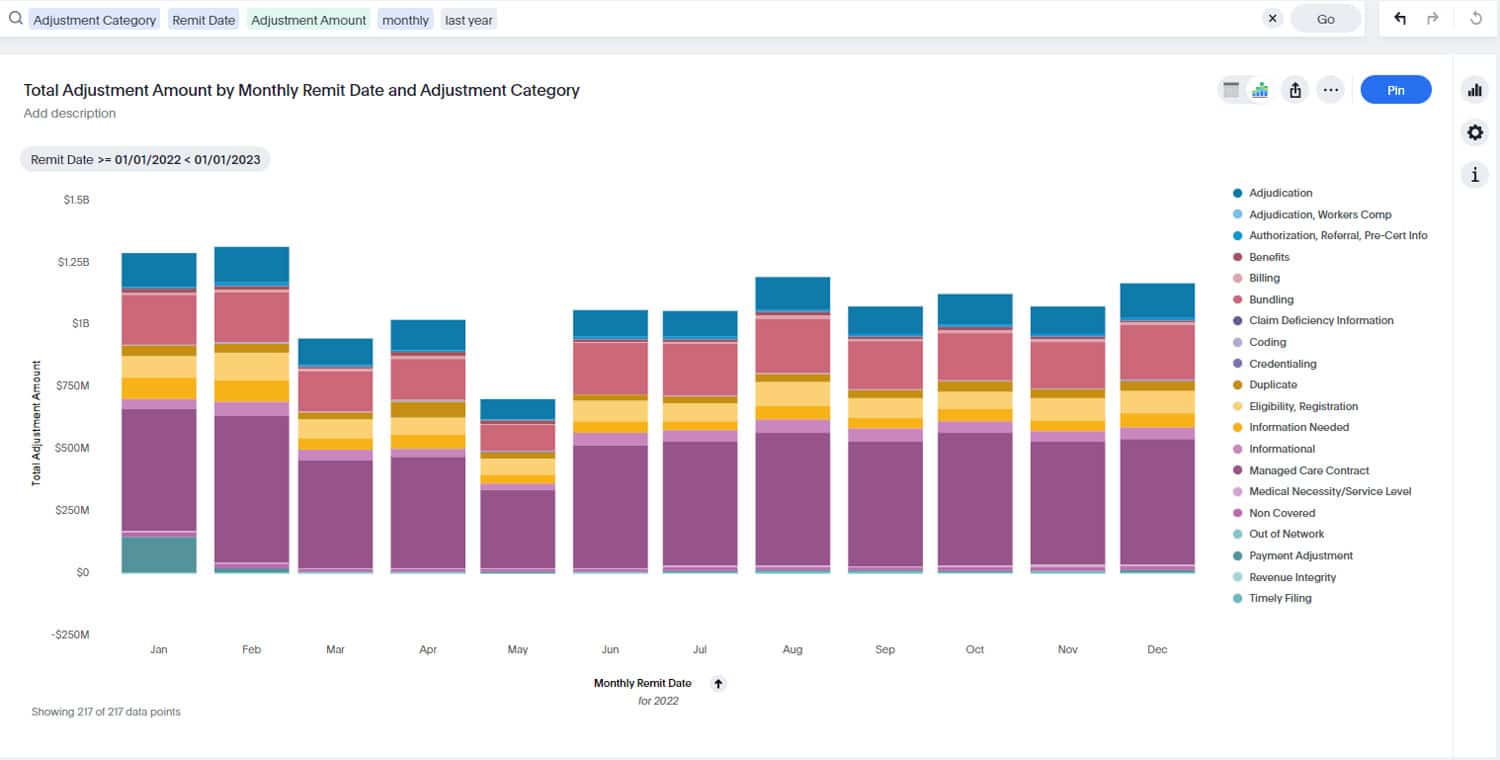An exclusive first look at billing, coding, and revenue integrity trends from the MDaudit Community.
As healthcare providers face increasingly complex billing, coding, and audit environments, the latest data from the 2025 benchmark report from MDaudit delivers a clear narrative around this year’s challenges and how to overcome them in 2026.
In this article, we highlight four major trends that revenue integrity, billing compliance, and coding teams must act on now to safeguard income and manage risk. These insights indicate where attention, investment, and process improvement are needed as we enter a new year.

Key Takeaways from 2025
1. Denials on the Rise
The first major trend is that denied claims are increasing significantly. In 2025, the average denied amount jumped 14% in hospital outpatient settings and 12% in inpatient settings.
What does this mean? More denied payments, delayed reimbursement, and cash-flow strain. Providers must sharpen their denial prevention strategies.
Actions:
- Monitor denial trends by payer, setting, and claim type.
- Reinforce root-cause analysis of denials (coding, documentation, charge capture).
- Invest in early-warning tools and audit workflows that catch high-risk claims before submission.
2. Payer Audits Increase
The second trend shows that external payer audits are accelerating: total at-risk amounts and audit cases per customer increased by 30% in 2025. At the same time, the average amount at risk per claim grew 18%. This intensification of payer scrutiny means higher stakes for providers. Audit responses must be faster, documentation must be stronger, and risk must be managed with a proactive strategy.
Action steps:
- Map current audit exposure by payer, audit type, and service line.
- Prioritize your highest dollar-at-risk claims for review and remediation.
- Build robust workflows to manage audit requests, capture documentation, and respond within deadlines to retain revenues on time.
3. Technology Unlocks Outcomes
The third insight offers a silver lining: technology and data-driven approaches are gaining traction and delivering measurable improvement. Risk-based audits within the MDaudit platform increased 25%, and pre-bill audits rose 30% in 2025.
In short, providers that anchor on analytics, AI, and real-time data are gaining ground. These tools enable teams to identify revenue opportunities, mitigate risk, and prevent denials before they occur.
Action steps:
- Integrate claim-denial analytics, payer-remit data, and predictive models into actionable workflows that drive business outcomes and return on investment (ROI).
- Deploy both post-bill and pre-bill revenue integrity workflows (e.g., pre-bill, pre-submission) to reinforce historical insights and provide sustainable foresight.
- Ensure your technology strategy includes end-to-end audit, coding, documentation, and charge-capture workflows.
4. Outpatient Coding Worsens
Finally, outpatient coding-related denials worsened again in 2025, with a 26% increase on top of a 126% spike the previous year. Coding accuracy in outpatient settings is now a critical vulnerability. With this escalation, providers must treat coding integrity not as an afterthought but as a foundational risk area.
Action steps:
- Conduct targeted risk-based coding audits in outpatient service lines (including ASCs, observation, and ambulatory services).
- Focus on training, review, and oversight of outpatient coding workflows.
- Ensure that coding tools, documentation support, and coder oversight are aligned with the heightened scrutiny, governance, and human oversight requirements.
Conclusion
The 2025 benchmark data make one thing clear: the margin for error in billing, coding, and audits has shrunk. Denials are rising, audits are intensifying, technology is becoming a differentiator, and outpatient coding is a major emerging weakness.
Organizations that adopt analytics, proactive audit/pre-bill workflows, and coding integrity will now have a distinct advantage. If you’d like a deeper dive into these trends, tools to respond effectively, or ways to operationalize these insights in your revenue integrity program, let’s connect.







